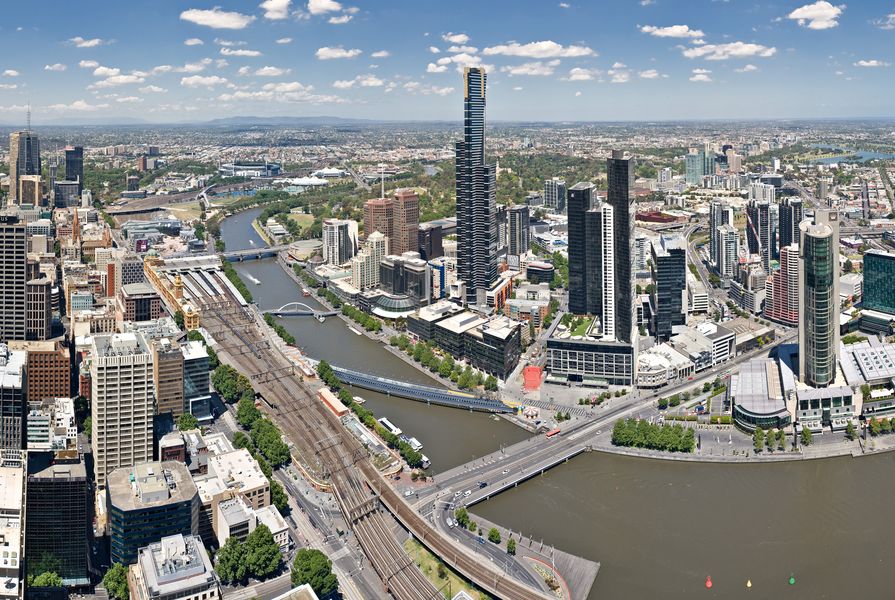In its 2017–18 budget, the federal government released what it called “comprehensive plan to address housing affordability.” While promising “no silver bullet,” the government claimed its plan was “designed to improve outcomes across the housing spectrum.”
The plan includes measures such as a $1 billion National Housing and Infrastructure Facility (NHIF), releasing surplus Commonwealth land for housing, a Western Sydney City Deal that will provide opportunities for planning and zoning reform, as well as a range of financial incentives to assist first-home buyers, downsizing for older Australians and to encourage private-sector investment in affordable housing.
The Australian Institute of Architects and the Planning Institute of Australian have cautiously welcomed the measures. Ken Maher, outgoing president of the Australian Institute of Architects characterized the government’s housing affordability plan as having “good intentions,” but said there were a number of “missed opportunities” on “critical” issues such as density, climate change and public transport.
“There’s a real absence of mention in the budget of climate change,” Maher said. “In the built environment area, there’s quite a lot that can be done to reduce carbon emissions.” He pointed to the Australian Sustainable Built Environment Council’s (ASBEC) Low Carbon, High Performance report released in May 2016, which outlined “the potential for the Australian built environment sector to make a major contribution to” reaching a zero-net emissions goal by 2050. The report called on policy makers to adopt a nation plan that includes minimum standards for buildings and targeted incentives.
Maher also lamented the lack of provision for public transport in the budget, despite the $70 billion it included for transport infrastructure. “Two issues – a rail link to the second airport in Sydney and high-speed rail are lacking,” he said.
“The big issue in housing is finding ways of providing greater stock in medium density.
“Providing housing in the wrong locations or not yet being able to provide sufficient public transport to service a lot of the existing housing developments in our cities is the most critical. There are measures [in the budget] to increase transport expenditure, but it’s connected sufficiently to housing supply.”
At the 2017 National Architecture Conference, international speaker Rahul Mehrotra, Harvard University professor of urban design and planning, said, “A simple principle, which through the 1950s and 1960s people took for granted and we’re forgotten in terrible ways, is that to give direct subsidies to housing is a disaster. The best way to subsidize housing is indirectly through public transportation, so that you can orchestrate mobility and you can create the densities and the spread that the Netherlands has. That’s the last thing we seem to be doing. Infrastructure becomes critical. That’s the role of the state.”
John Brockhoff, the Planning Institute of Australia’s (PIA) principal policy officer, agreed. “Public transport helps housing affordability in so many ways. Firstly, public transport provision doesn’t artificially inflate demand and send prices upwards. Secondly, it enables supply to become available. Thirdly, it creates a situation whereby living costs in general, in addition to housing costs, are reduced. Lastly, it provides a stimulus to the economy by enabling people to access jobs, facilities and things of value by improved transport.
“In terms of what was missing from the budget I was looking for investments in areas that are undergoing intense growth and renewal, particularly investments in public transport.”
The budget’s measures such as the National Housing Infrastructure Facility and the establishment of a new National Housing Finance Investment Corporation were generally welcomed across the industry.
Last week, a report released by the Australian Housing and Urban Research Institute and the Bankwest Curtin Economics Centre suggested that if governments are unwilling to reform the policies that make holding savings in housing so attractive, then they must address supply-side issues that would make the development of cheaper housing more attractive. The new National Housing Finance Investment Corporation will provide cheaper, long term financing to community housing providers.
However, other measures in the housing affordability plan left commentators unconvinced.
Kate Shaw, the Australian Research Council future fellow in urban geography and planning, said “On housing supply, the [budget] pronouncements are disappointing. The supply-side measures are poor – the key initiatives are small, untied and unsupported.”
On specific policies, UNSW professor of economics Richard Holden characterized the First Home Super Saver Scheme as “a cruel hoax” that will “cost the government $250 million over four years and do absolutely nothing to help first home owners,” he wrote in The Conversation.
He also questioned the efficacy of the financial incentive for people over 65 to downsize.
Research conducted by the AHURI in 2014 found that “financial motivations [were] of importance to relatively few downsizers,” and “the most common factor contributing to downsizing for older Australians was a desire for a change in lifestyle.”
In 2015, the think tank Per Capita called for “a policy mix that adapts the current housing stock to lower lives,” in the report entitled The Head, The Heart and The House.
“Per Capita recommends a government reimbursement scheme for home retrofits,” the report continued.
Carolyn Whitzman, professor of urban planning at the University of Melbourne, said, “There needs to be a comprehensive program based on evidence and the basic need of people to have a secure roof over their heads. This budget does not deliver such a program.”
















